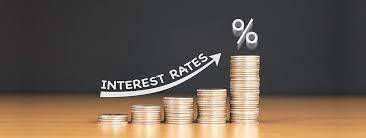A savings account is an integral component of any solid savings strategy. While your income, spending habits and financial decision-making will ultimately drive the balance of that account, you can recruit help from a financial institution. If you choose a bank or credit union that pays interest on your savings account, your money will grow — but a few percentage points can make a difference.
How a savings account works
When you deposit your money in a savings account, the bank doesn’t keep all that cash in a safe. Instead, the bank puts your money to work by loaning it to other customers. Don’t worry — your money is protected, even if the other customers don’t repay the loan, thanks to insurance from the Federal Deposit Insurance Corporation for banks or the National Credit Union Administration for credit unions. As banks earn interest on the money they loan to borrowers, you earn interest on your deposited cash.
When banks charge higher rates for loans, they usually offer higher rates to savers. So, when you see interest rates on mortgages increase, for example, you’ll often see savings interest rates, referred to as the annual percentage yield, or APY, typically move in the same direction.
The APY represents your total annual earnings, regardless of whether your financial institution pays simple interest or compounding interest. If you deposit $20,000 in a savings account that advertises a 2.35% APY, for example, you stand to earn $469.41 in interest over the course of the year, simply for letting your money sit there.
How to calculate simple interest for a savings account
Estimating your potential earnings from simple interest for a savings account is fairly… simple. Take your principal deposit, and multiply it by the interest rate to forecast your earnings for the year. For example, a $5,000 principal that earns 5% interest each year looks like this:
$5,000 x 0.05 = $250
Simple interest accrues on the money deposit. So, you won’t earn an additional 5% on that $250 you earn in interest. You’ll need to make sure that your savings account compounds to earn interest on your interest.
How compounding interest works
When interest compounds, the earnings are constantly multiplying. Rather than earning interest solely on the principal balance, you’ll earn interest on the total balance as it grows. Some accounts compound interest daily; others less frequently, such as weekly, monthly or quarterly. Daily compounding is the most lucrative, providing more opportunities for your cash to grow.
For example, a $5,000 deposit that earns 5% interest compounding annually would earn $250 of interest in the first year. What about an account that compounds daily? The first year comes out to $256 in interest. An additional $6 might not blow your mind, but every penny counts when you’re trying to grow your money. Consider the math in the table below. After depositing $5,000 in an account that earns 5% with interest compounding daily, your balance will be more than $3,000 higher after 10 years from interest growth alone.
$5,000 at 5% interest rate, compounding daily
| Beginning balance | Balance after 1 year | Balance after 5 years | Balance after 10 years |
| $5,000 | $5,256 | $6,420 | $8,243 |
To truly take advantage of compounding, you can grow your balance more proactively. Consider this example of the same account with an additional savings deposit of just $50 per month.
$5,000 (plus $50 monthly deposits) at 5% interest rate, compounding daily
| Beginning Balance | Balance after 1 year | Balance after 5 years | Balance after 10 years |
| $5,000 | $5,872 | $9,828 | $16,027 |
Long-term benefits of compounding
Financial experts often describe compounding as a snowball. As you roll a snowball through a fresh layer of snow, it gets bigger and bigger. Compounding interest acts similarly: It’s constantly getting just a bit larger. Consider that initial $5,000 deposit with 5% interest compounded daily. Over 10 years, that adds up to $3,243 of additional interest — a nice size snowball.
By adding just $50 a month to your savings, with interest compounding daily, your snowball will have ballooned to about $11,000 in interest. That’s a snowball worth getting excited over!
How to earn more interest in a savings account
If you’re looking to supersize your earnings, make sure you deposit your money in a high-yield savings account and look for institutions that compound interest daily. Banks with fewer brick-and-mortar branches — or no physical branches at all — have lower overhead operating costs and tend to pay higher interest rates.
But you don’t necessarily have to put your money into a savings account to take advantage of compounding interest. APY rates for the best money market accounts and certificates of deposit (CDs) are also increasing. Just make sure you understand the tradeoffs that come with each kind of account.
The bottom line
As the Fed attempts to stem inflation, interest rates are rising at many banks and credit unions. Taking advantage of a high-yield savings account that compounds daily or monthly will give you the best growth potential for any money you have parked in savings. Remember, savings accounts are variable-rate products, so the APY can change at any time. Locking in a high-yield fixed-rate APY with a CD has advantages, but it will limit your access to deposited funds without incurring a penalty if you withdraw money before the CD matures. Understanding your options and taking advantage of rising rates will benefit you in the long run.






